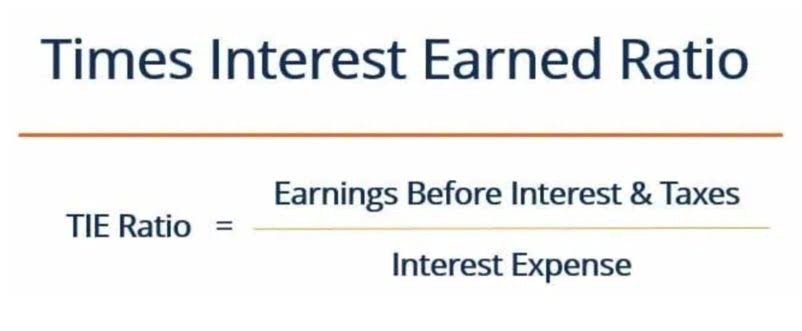Income statement presentation: IFRS compared to US GAAP
Garota de Programa Ribeirão Preto - SP
Perfil
- Cidade: Ribeirão Preto - SP
- Eu Sou:
Apresentação:

The IFRS income statement follows certain formatting requirements and options different from US GAAP. The income tax relating to each component of other comprehensive income is disclosed in the notes. (d) The income tax relating to each component of other comprehensive income is disclosed in the notes. Other comprehensive income (OCI) appears on the balance sheet as does accumulated other comprehensive income (AOCI). Start using Reach Reporting today to enhance your financial reporting process and comply with global standards.
Differences between IFRS vs GAAP Income Statement

Additionally, it can improve comparability where IFRS standards permit similar items to be recognised in either profit or loss or OCI. IFRS requires a set of statements, including financial position, comprehensive income, cash flows, and changes in equity. IAS 1 outlines the presentation and classification, such as separating current and non-current assets. As previously mentioned, all the core financial statements are based on accrual accounting. Accrual accounting, in turn, is based on a series of standards-based processes and estimates. Some of these estimates have more measurement uncertainty than others, and some estimates are inherently more conservative than others.
Share This Book
This determination, however, should be based on which approach is most relevant and reliable and usually depends on the company; that is the industry in which the company operates and its users’ needs. Expenses from operations must be reported by their nature and, optionally, by function (IFRS). Expenses by nature relate to the type of expense or the source of expense such as salaries, insurance, advertising, travel and entertainment, supplies expense, depreciation and amortization, and utilities expense, to name a few.

Financial Planning & Analysis Template
- This content is for general information purposes only, and should not be used as a substitute for consultation with professional advisors.
- Be aware of the change in wording and statement presentation as described above as well as know the additional disclosures under FRS 102 so that they can prepare financial statements which are compliant with FRS 102.
- US GAAP also has the concept of comprehensive income, which is defined similarly to IFRS.
- Unusual items can include discontinued operations, lawsuits, damage from natural disasters, and restructuring costs.
- Comprehensive income is the sum of that net income plus the value of yet unrealized profits (or losses) in the same period.
Under this method, companies present the cost of sales separately from other expenses. For instance, expenses may be disaggregated as personnel costs, purchases of materials, transport costs, depreciation and amortization, and advertising costs. The GAAP multi-step format, on the other hand, comprises a gross profit section where the cost of sales is deducted from sales, followed by the presentation of other income and expenses to reach an income before tax. For non-SEC registrants under GAAP, there is limited guidance on the presentation of the income statement, just as with IFRS.
Comprehensive income is the sum of a company’s net income, as recorded on the income statement, and unrealized income (or “other comprehensive income”) that is not included on an income statement but is recorded in the statement of comprehensive income. The net income section provides information derived from the income statement about a company’s total revenues and expenses. Since it includes net income and unrealized income and losses, it provides the big picture of a company’s value. This lack of a consistent basis for determining how items should be presented has income summary led to an inconsistent use of OCI in IFRS standards. It may be difficult to deal with OCI on a conceptual level since the International Accounting Standards Board (the Board) is finding it difficult to find a sound conceptual basis.
- Section 35.9(d) mandates that where a business was previously considered a discontinued operation under old GAAP it is not adjusted on transition to new GAAP.
- In this article we highlight key considerations affecting preparers when choosing the structure, format and contents of the income statement and other presentation matters.
- By providing this checklist, we aim to simplify the complex process of preparing financial statements under IFRS, ensuring you can focus on accurate and compliant reporting.
- Other comprehensive income is also not the same as “comprehensive income”, though they do sound very similar.
- The IFRS Foundation is a not-for-profit, public interest organisation established to develop high-quality, understandable, enforceable and globally accepted accounting and sustainability disclosure standards.
- An entity may refer to the combined statement as the Statement of comprehensive income.
Net Income and Comprehensive Income
Accounting entries related to income tax will be covered in the next accounting course (Intermediate Accounting 2). The sum of all the revenues, expenses, gains, and losses to this point represents the income or loss from continuing operations. This is a key component used in performance analysis and will be discussed later in https://www.facebook.com/BooksTimeInc this chapter.

IFRS Model Accounts and Disclosure Checklist: Key Reporting Requirements

Further, items shouldn’t be displayed with more prominence than other items required in the income statement. Regardless of the approach used, companies need to ensure the presentation is not misleading and is relevant to the understanding of the financial statements. Lastly, if presenting expenses by function, companies are required to include additional information on the nature of expenses (e.g. depreciation, amortization and staff costs) in the notes to the financial statements.
Common costs such as utilities, supplies, insurance, and property tax expenses would have to be allocated between the various functions using a reasonable basis such as square footage or each department’s proportional share of overall expenses. This allocation process can be cumbersome and will require more time, effort, and professional judgment. It provides a comprehensive view for company management and investors of a company’s profitability picture. Examples of transitory gains and losses are those that arise on the remeasurement of defined benefit pension funds and revaluation surpluses on PPE. This article looks at what differentiates profit or loss from other comprehensive income and where items should be presented. We believe the presentation of items in the income statement will continue to be a heightened area of focus and subject to future change.
- In 2007, the IASB (International Accounting Standards Board) published a revised version of IAS 1 that included some changes to the presentation of comprehensive income.
- Additionally, it can improve comparability where IFRS standards permit similar items to be recognised in either profit or loss or OCI.
- The recognition of gains and losses is also a factor when comparing IFRS vs GAAP income statement presentations.
- Our platform allows financial professionals to streamline report creation, ensuring adherence to IFRS standards with minimal effort.
- When preparing the income statement (or statement of comprehensive income) it’s important to note that discontinued operations amounts should be reported net of tax.
- A type of item that is clearly unrelated to, or only incidentally related to, the normal and usual activities of the company can be defined as unusual.
- Reclassification adjustments are amounts recognised to profit or loss in the current period that were previously recognised in OCI in the current or previous periods.
GAAP and IFRS also differs in terms of discounting of revenue
The IASB issued an amended IAS 1 in September 2007, which included an amendment to the presentation of owner changes in equity and comprehensive income and a change in terminology in the titles of financial statements. In June 2011 the IASB amended IAS 1 to improve how items of other income comprehensive income should be presented. If reclassification ceased, then there would be no need to define profit or loss, or any other total or subtotal in profit or loss, statement of comprehensive income and any presentation decisions can be left to specific IFRS standards. It is argued that reclassification protects the integrity of profit or loss and provides users with relevant information about a transaction that occurred in the period.

